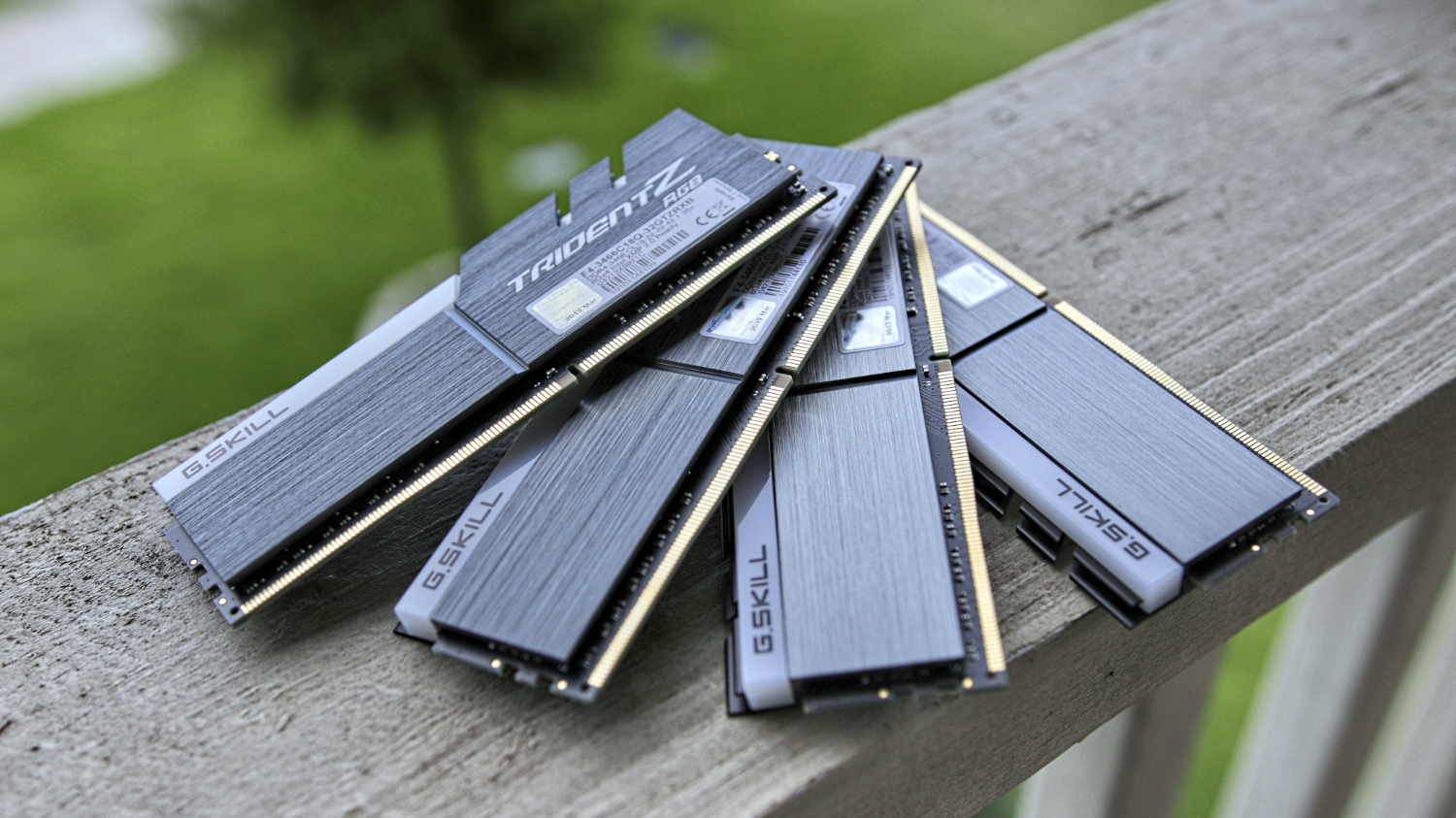What Is RAM? A Basic Definition
RAM stands for random access memory. This is where a PC stores data before it’s processed. A RAM DIMM (Dual in-line Memory Module), or more simply thought of as a RAM stick, is made of up of memory chips that a PC can write (and rewrite) rapidly. RAM is a form of volatile memory, which means that it only holds onto data while the chip is powered and erases everything when you shut down the PC. RAM memory is measured in gigabytes (GB).
When people talk about RAM in a PC, they are most likely referring to DDR SDRAM (Double Data Rate Synchronous Dynamic RAM), which is usually found on DIMM slots on the motherboard. On the other hand, GPUs (aka graphics cards aka video cards) use GDDR SDRAM (Graphics Double Data Rate Synchronous Dynamic RAM). Modern RAM offerings all use SDRAM, but sometimes you'll see people and retailers refer to it as "DRAM" anyway.
How Much RAM do You Need (Including for Gaming)?
For most, including gamers and those who do mainstream productivity, 16GB will do. But if you’re a heavy multi-tasker or power user, you may want 32GB of RAM. If your computer ever uses up all of its physical RAM, it can use part of a storage drive as much-slower "virtual memory."
For an in-depth look at how much RAM you need, check out this article: How Much Memory Do You Need: 8, 16 or 32GB of RAM?
What Is DDR4?
There have been four generations of DDR memory. DDR4 is the most recent and has a bandwidth of 32 GB/s. Generally, it's the fastest type of DDR memory currently available and has the best performance and largest amount of memory. So naturally the best RAM offerings use DDR4. Most modern PCs and the best motherboards require DDR4, but older systems may only support DDR3 or even DDR2.
What Is DDR5?
The race to DDR5 is currently a-go, with vendors like Cadence and Micro planning for production by the end of 2019. DDR5 will offer double the density and double the performance of first-generation DDR4.
For all the details on DDR5, check out our article, What We Know About DDR5 So Far.
Get Tom's Hardware's best news and in-depth reviews, straight to your inbox.
DDR SDRAM Memory Comparison
| Memory Type | Release Year | Bandwidth | Pins per Ch | Voltage (V) | Prefetch |
|---|---|---|---|---|---|
| DDR | 2000 | 3.2 GB/s | 184 | 2.5/2.6 | 2n |
| DDR2 | 2003 | 8.5 GB/s | 240 | 1.8 | 4n |
| DDR3 | 2007 | 17 GB/s | 240 | 1.35/1.5 | 8n |
| DDR4 | 2014 | 25.6 GB/s | 380 | 1.2 | 8n |
| DDR5 | 2019 | 32 GB/s | 380 | 1.1 | 8/16n |
Understanding RAM Product Names
When looking at RAM product names, you’ll see the vendor name, followed by the product’s branding, then the RAM type and, finally, a four-digit number. That four-digit number tells you how many mega transfers (1,000,000 data transfers) the RAM can do in one second, the higher the better. For example, the Super Talent Project X DDR4-3000 16GB RAM can conduct 3,000 mega transfers in one second, or 3,000 MT/sec.
What Is SRAM?
In addition to SDRAM, computers use SRAM (static RAM) for the CPU's on-board cache.
This article is part of the Tom's Hardware Glossary.
Further reading:

Scharon Harding has over a decade of experience reporting on technology with a special affinity for gaming peripherals (especially monitors), laptops, and virtual reality. Previously, she covered business technology, including hardware, software, cyber security, cloud, and other IT happenings, at Channelnomics, with bylines at CRN UK.
